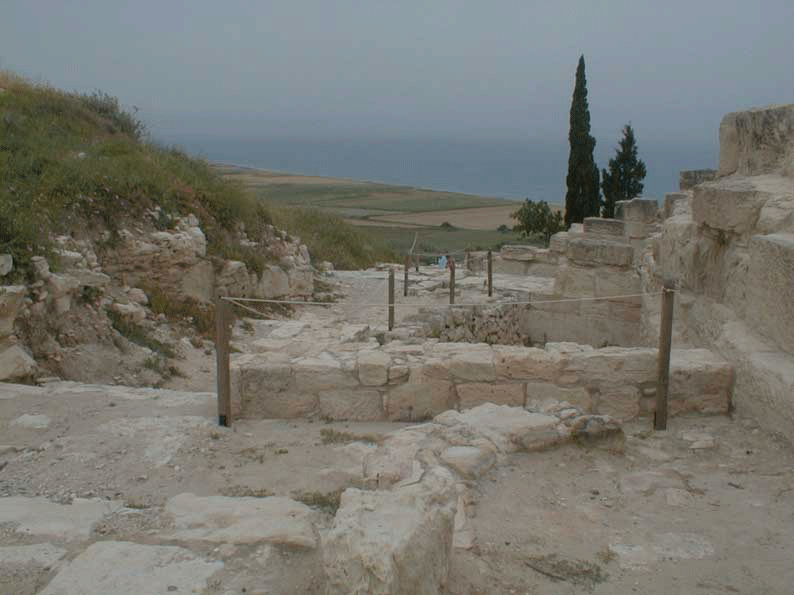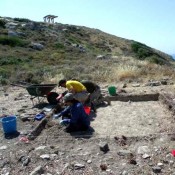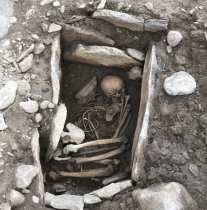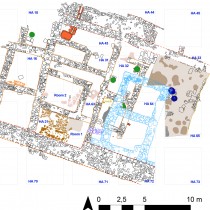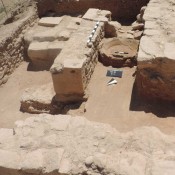Kourion ancient earthquake victims revisited as Kourion Urban Space Project’(KUSP) produces additional evidence on the 4th c. AD catastrophe.
The Department of Antiquities (Cyprus) has announced the completion of the 2014 excavation season of the Kourion Urban Space project (KUSP) under the direction of Dr. Thomas W. Davis of the Tandy Institute for Archaeology at Southwestern Baptist Theological Seminary in Fort Worth, Texas.
This year’s excavations uncovered the remains of more victims of the massive earthquake that destroyed Kourion in the fourth century AD. According to an official announcement, initial analysis indicates the remains consist of two adults, a juvenile, and an infant. The family was found huddled together; the infant was found under the right arm of one of the adults.The bones were badly crushed and, in some instances, located directly under collapsed architectural stones.
The house was rich in material cultural remains. Fragments of a large imported glass plate were found around and under portions of the earthquake tumble.
The plate was manufactured from bundles of hollow yellow glass canes which were fused together in a dark green matrix. These plates are made in Egypt, and are usually found in Coptic cemeteries. The Kourion plate provides what may be the best dated example in the world, the Antiquities Department said.
KUSP has completed the third season of a long-term archaeological investigation at the site of Kourion in the Limassol district. KUSP partners include the Australian Institute of Archaeology, the University of Cyprus, the Cyprus Technical University and the Western Sovereign Base Area Archaeology Society.
Kourion was recorded by numerous ancient authors including Ptolemy, Stephanus of Byzantium, Hierocles and Pliny the Elder. The city has passed through different phases spanning the Hellenistic, Roman and Christian periods.
